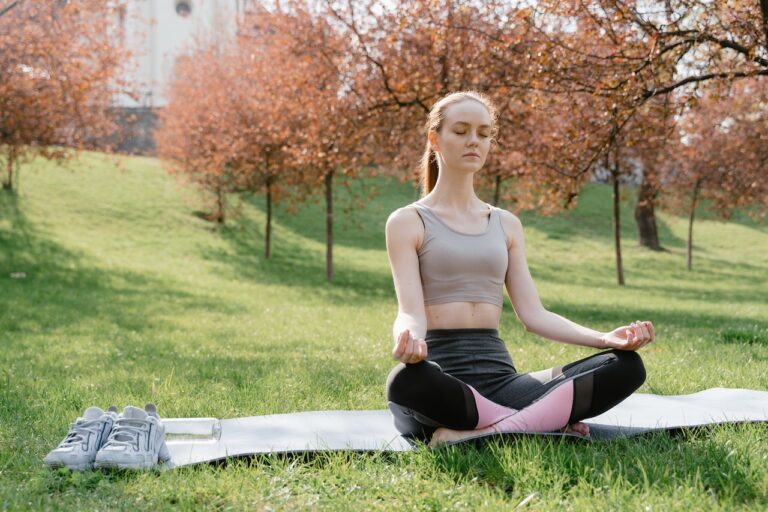Disclaimer: My content is NOT a substitute for professional advice, diagnosis, or treatment. When in doubt, ask a therapist!
“Whatever you put your attention on in your life grows stronger.
— Tara Brach
Where attention goes, energy flows.”
Not all meditation is made equal.
Some meditation techniques might not be ideal for people with social anxiety.
Why?
Before I go into that, let’s first understand how your attention changes when you’re socially anxious…
The attentional bias that locks you in social anxiety
Let’s say you’re socially anxious right now.
What do you pay more and less attention to?
Chances are, you’re a lot more focused on two things:
- Yourself: your thoughts, self-judgments, sensations, and words
- Perceived social threats: any verbal and nonverbal language from the other person that might seem judgmental, say a raised eyebrow
Research shows that people with social anxiety disorder have a much higher self-focused attention than others. They also pay more attention to threat-related stimuli i.e. verbal and nonverbal language that indicate judgment.
Because of the heightened focus towards oneself and any social threats, the anxiety feels even more intense. And if you connect the dots, you can see how this keeps you trapped in what I call the Social Anxiety Spiral…

- The more you pay attention to yourself and anything that makes you anxious…
- The more you feel that you’re socially inadequate…
- The more anxious you become….
- The more your attention gets stuck.
How meditation can break the Social Anxiety Spiral
To make it clear, the challenge isn’t to eliminate self-focused attention. That would be harder than praying for the sky to rain money…
It’s about broadening your attention to include yourself and your conversation partner and the surroundings. It’s a holistic kind of attention.
Larry A. Cohen, the co-founder of the National Social Anxiety Center, said that it’s about…
“[getting] out of your head and [focusing] externally on the conversation / activity / person in the moment.”
There are a few meditation methods that are effective in helping you cultivate external focus. Here they are:
Big sky meditation
Big sky meditation, a method created by Jack Kornfield, is about broadening your attention to be as wide as the sky or space.
Here are his instructions:
“Whenever you begin, sit comfortably and at ease. Let your body be at rest and your breathing be natural. Close your eyes. Take several full breaths and let each release gently. Allow yourself to be still.
Now shift awareness away from the breath. Begin to listen to the play of sounds around you. Notice those that are loud and soft, far and near. Just listen. Notice how all sounds arise and vanish, leaving no trace. Listen for a time in a relaxed, open way.
As you listen, let yourself sense or imagine that your mind is not limited to your head. Sense that your mind is expanding to be like the sky-open, clear, vast like space. There is no inside or outside. Let the awareness of your mind extend in every direction like the sky.“
Check out the full details here.
Kaleidoscopic meditation
This meditation technique is inspired by Andrew Huberman, a Stanford neurobiology professor (check out his recommendation here). I’ve tried it multiple times in the last year, and have personally found it to be helpful.
But why the word “Kaleidoscopic”?
It’s about fluidly shifting your attention modes between focusing on yourself and focusing on others and the larger surroundings — not unlike the swirling colors and shapes in a kaleidoscope.
Here’s a suggested sequence, feel free to adapt this in any way you want:
- Zoom in: As you breathe in and out, notice how you’re feeling inside your body. If there’s a strong emotion or sensation, take note of that gently.
- Zoom out: After a few breaths, shift your attention towards your surroundings and how that might be affecting how you feel and think.
- Continue zooming out: Broaden your attention further and imagine how your awareness encompasses the entire house, neighborhood, city/town, and even universe.
- Zoom back in: Return to your body and end the meditation.
Walking meditation
If you dislike sitting meditation, this might be for you…
But how can you walk and meditate at the same time? It’s simple and even fun. The key is slowing down as you walk, and doing the following:
- Feel the motion in you: As you walk, bring awareness to your movement — of your feet, your legs, your hips, your hands, and the rest of your body. Notice how the different muscles work together to help you move forward.
- Feel the ground under you: Notice how it feels to step on the ground, how your left step feels vs. your right, and how the sensations change as the terrain changes — however subtle.
- Feel the weather around you: How hot/cold is the weather? Is there wind or rain ? If, so how does it feel on your skin?
For more instructions, I recommend learning from Yongey Mingyur Rinpoche, a Buddhist teacher and the author of The Joy of Living:
Self-compassion meditation
Self-compassion meditation is especially helpful for people with social anxiety.
Research shows that self-compassion helps alleviate social anxiety symptoms. Specifically, it helps reduce post-event rumination, i.e. worrying and beating yourself up after a conversation.
Here’s how to practice:
- As you sit or lie down, close your eyes and breathe in and out.
- Gently say to yourself: “May I be well” (or any other phrase of your choosing that evokes self-compassion)
- It can help to imagine that a loved one is with you
If you need a guided version, here’s one by Tara Brach:
Related articles

